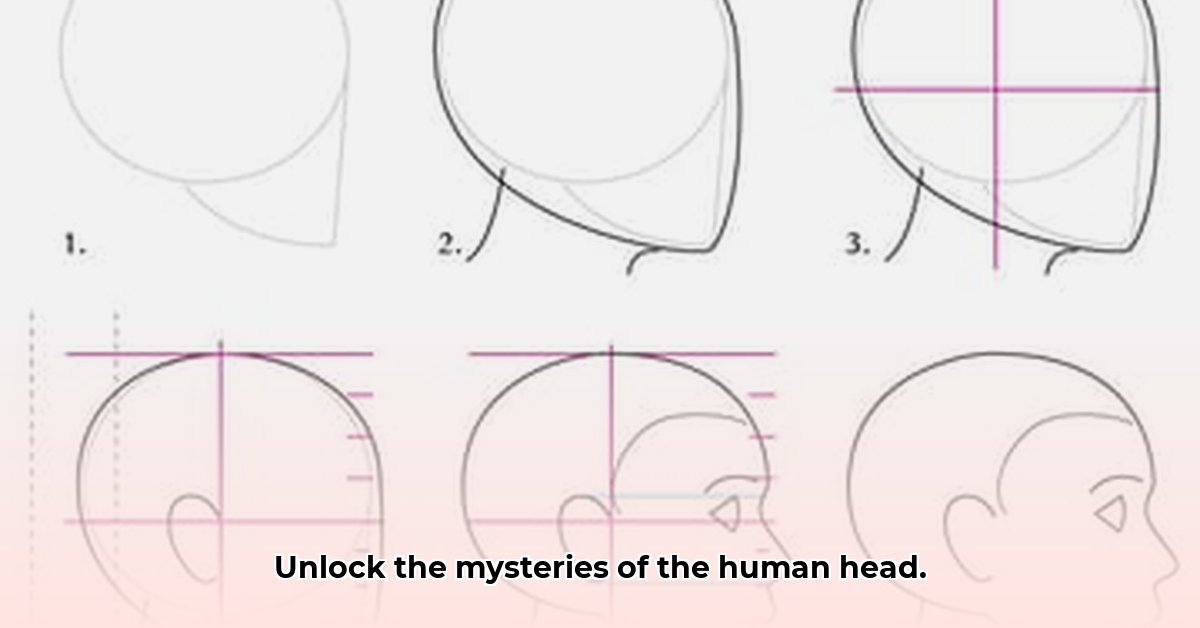
Let's explore the intricate world of the human head and neck—a region teeming with vital structures working in perfect harmony. This guide provides a structured approach to understanding this complex anatomy, suitable for both medical students and curious laypeople. We'll break down key components, exploring their functions and clinical relevance. For a visual guide to head parts, check out this helpful resource.
The Cranium: Protecting the Brain
The cranium, or skull, is the protective shell for the brain. It's not a single bone, but a complex arrangement of eight major bones precisely interlocked. These include the frontal bone (forehead), parietal bones (top and sides), temporal bones (housing ears and vital structures), occipital bone (back of the head), and the sphenoid and ethmoid bones (base of the skull). This intricate structure provides robust, lightweight protection. Understanding its arrangement is crucial for comprehending head injury effects on the brain. Did you know that even slight variations in cranial bone thickness can influence the impact of trauma?
Facial Bones: Structure and Identity
The facial bones shape our unique identities and are crucial for functions like chewing, breathing, and speaking. Key players include the mandible (lower jaw, the only movable facial bone), maxillae (upper jaw), zygomatic bones (cheekbones), and nasal bones. Their intricate arrangement allows for the wide range of facial expressions that communicate our emotions. The delicate balance of these bones is evident in the devastating effects of facial fractures.
Muscles of Mastication: The Power of Chewing
Chewing, or mastication, is made possible by a coordinated group of powerful muscles. The masseter (along the jawline), temporalis (sides of the head, near the temples), and medial and lateral pterygoids (deep within the jaw) work together. Their complex interaction allows smooth jaw movement. Problems with these muscles can lead to temporomandibular joint (TMJ) disorders, causing pain and restricted jaw movement. On average, we use these muscles over 2,000 times a day!
Muscles of Facial Expression: Communicating Emotion
Our faces eloquently express emotions through intricate facial muscles. A simple smile involves the coordinated action of numerous muscles, creating subtle changes in eyebrows, lips, and eyes. These muscles are responsible for the hundreds of expressions enriching human interaction. Disorders like Bell's palsy, which causes facial paralysis, highlight the vital role of these muscles in communication and emotional expression. A simple frown, for example, involves at least a dozen different muscle groups!
Salivary Glands: Digestion's Silent Helpers
Before you even take a bite, digestion begins with saliva, produced by three major salivary glands: parotid, submandibular, and sublingual. Saliva contains enzymes that initiate food breakdown. These glands are strategically positioned to deliver saliva to the mouth. Dysfunction can lead to dry mouth (xerostomia) and other dental issues. Did you know your saliva composition changes depending on the type of food you're about to eat?
Major Blood Vessels and Nerves: The Head's Life Support System
A complex network of blood vessels and nerves provides vital support to the head and neck. Carotid arteries supply oxygenated blood to the brain, while jugular veins carry deoxygenated blood away. Cranial nerves, originating from the brainstem, control essential functions like sight, hearing, taste, and facial movements. Disruptions to this network can lead to serious neurological conditions. This intricate system is, quite literally, the lifeline of the head and neck.
The Temporomandibular Joint (TMJ): A Complex Hinge
The TMJ connects the lower jaw to the skull. This joint enables opening, closing, and grinding movements, essential for speaking, chewing, and yawning. While often overlooked, TMJ disorders (TMDs) are a common source of pain and limited jaw mobility.
Key Structures: A Summary Table
| Structure | Function | Potential Issues |
|---|---|---|
| Cranium | Protects the brain | Fractures, skull deformities, impact injuries |
| Facial Bones | Facial structure, expression, eating | Fractures, cleft palate, growth abnormalities |
| Masseter Muscle | Chewing | TMJ disorders, muscle spasms |
| Facial Muscles | Facial expression | Bell's palsy, other forms of facial paralysis |
| Salivary Glands | Saliva production | Dry mouth (xerostomia), infections (sialadenitis) |
| Carotid Arteries | Blood supply to the brain | Stroke, aneurysms |
| Cranial Nerves | Sensory and motor functions of head and face | Neuralgia (pain), paralysis |
| Temporomandibular Joint (TMJ) | Jaw movement | TMJ disorders (TMD), pain, limited mobility |
This guide provides a foundational understanding of human head anatomy. Further exploration will reveal the immense complexity and fascinating functionality of this remarkable region. Remember, this is a dynamic field; ongoing research continually refines our understanding.